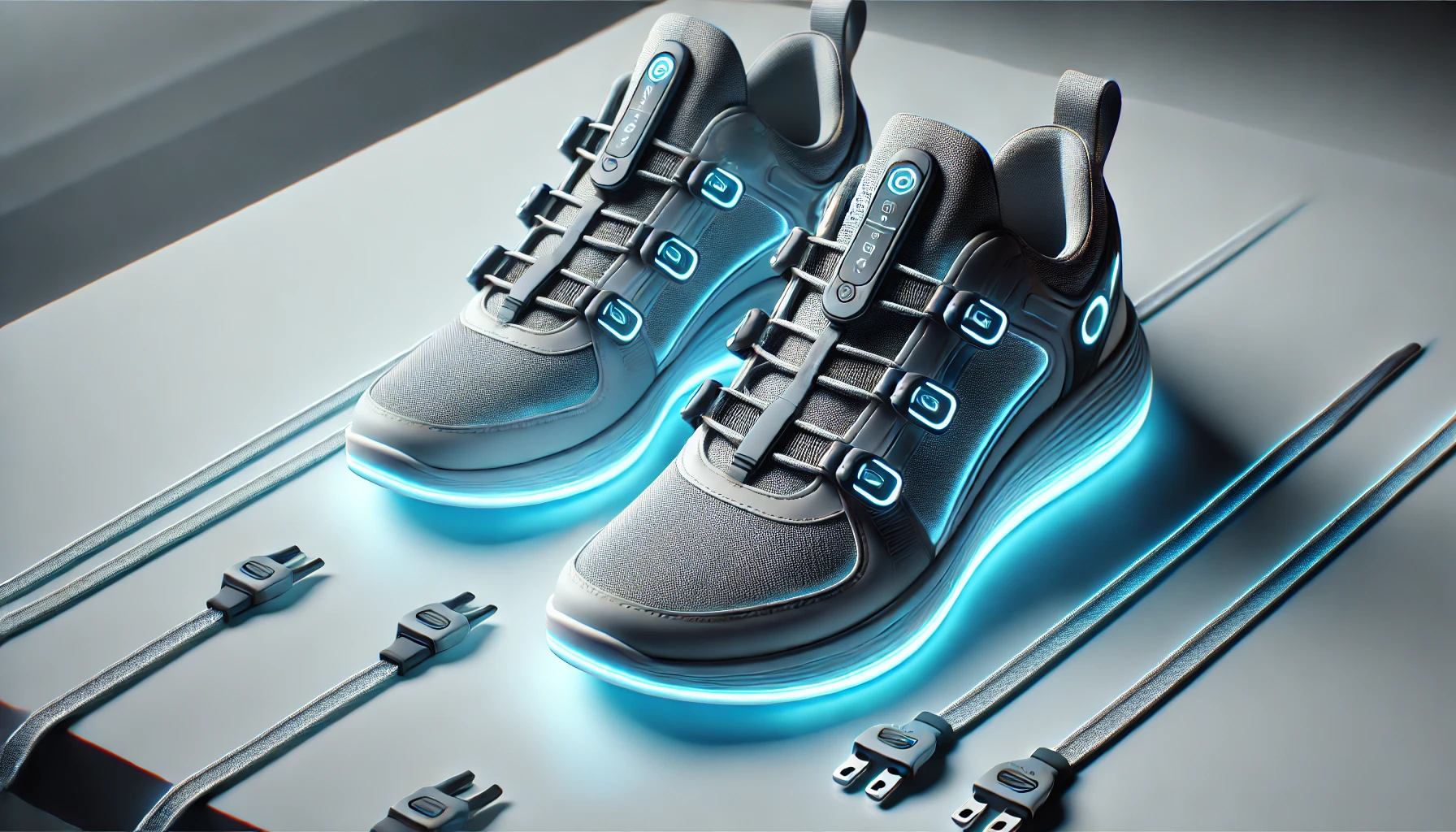Shoelaces untying themselves can cause inconvenience and even accidents, especially during physical activities. A simple yet robust solution integrating innovative technology and design principles can revolutionise footwear and eliminate this age-old problem.
SUMMARY
The Problem: Shoelaces often come untied during physical activity, posing safety risks and inconveniences.
The Solution: A combination of self-locking lace mechanisms, anti-slip lace coatings, and smart laces technology.
Stakeholders: Footwear manufacturers, designers, consumers, and sportswear brands.
CONTEXT
Untied shoelaces are more than a minor annoyance—they can lead to tripping hazards, injuries, and frustration. From athletes to daily walkers, millions face this issue. Current solutions like double knots are unreliable and outdated. A technological and design-driven approach is crucial to tackle this pervasive problem.
CHALLENGES
- Lace Friction: Traditional materials allow movement and loosening.
- Human Error: Improper tying techniques exacerbate the problem.
- Activity Impact: High-intensity activities, such as running, loosen knots more rapidly.
- Aesthetic vs Functionality: Many solutions compromise the shoe’s visual appeal.
GOALS
- Short-Term: Develop prototype self-securing shoelaces integrating innovative materials and design.
- Long-Term: Achieve widespread adoption across multiple industries and demographics, reducing tripping-related injuries and improving user convenience.
STAKEHOLDERS
- Footwear Manufacturers: Innovate and produce advanced lace systems.
- Consumers: Provide feedback and demand better solutions.
- Sportswear Brands: Endorse and market functional, stylish alternatives.
- Technology Developers: Implement smart solutions like pressure sensors and automated tightening.
SOLUTION
1. Self-Locking Lace Mechanisms
- Description: Incorporate small locking systems at lace ends that engage automatically upon tying, preventing loosening.
- Challenges Addressed: Eliminates movement-based loosening.
- Innovation: Compact, lightweight locks using materials like carbon fibre or polymers.
- Scalability: Easily integrated into both premium and budget-friendly shoes.
- Sustainability: Recyclable materials ensure environmental responsibility.
- Cost: Development estimated at £50,000 per prototype; production cost per pair £2–5.
2. Anti-Slip Lace Coatings
- Description: Develop laces with anti-slip coatings, such as silicone or specialised rubber compounds, that enhance knot friction.
- Challenges Addressed: Reduces slippage from frictional forces.
- Innovation: Cutting-edge material science ensures durability and grip without affecting flexibility.
- Scalability: Applicable to all types of footwear.
- Sustainability: Biodegradable coatings mitigate environmental impact.
- Cost: Research and development estimated at £75,000; production cost per pair £1–3.
3. Smart Laces Technology
- Description: Create laces embedded with small sensors and micro-motors to automatically tighten when they detect slack. Users can control tension via a smartphone app or preset configurations.
- Challenges Addressed: Eliminates user dependency on proper tying techniques.
- Innovation: Utilises advancements in microelectronics and IoT connectivity.
- Scalability: Targeted at premium markets initially; costs reduce as adoption grows.
- Sustainability: Rechargeable battery systems, with a lifespan of several years, promote eco-friendly design.
- Cost: Initial research and production estimated at £500,000; individual unit cost around £50 initially, dropping with scale.
IMPLEMENTATION
Year 1:
- Prototype development for self-locking and anti-slip laces.
- Collaborations with material scientists and designers.
Years 2–3:
- Large-scale production of self-locking and anti-slip laces.
- Testing and consumer trials for smart laces.
Years 4–5:
- Mass adoption, marketing campaigns, and partnerships with major footwear brands.
- Expand smart lace features to integrate fitness tracking and injury prevention.
Resources Needed:
- Financial: £1 million initial funding.
- Human: Teams of engineers, designers, and marketers.
- Technological: Material R&D labs, IoT developers.
Risks and Mitigation:
- High production costs: Use economies of scale.
- Consumer reluctance: Educate on safety and convenience benefits.
Monitoring and Evaluation:
- Track reduction in reported tripping incidents.
- Measure adoption rates and user satisfaction.
FINANCIALS
| Cost Component | Estimate |
|---|---|
| Self-locking lace R&D | £50,000 |
| Anti-slip lace R&D | £75,000 |
| Smart lace technology R&D | £500,000 |
| Marketing campaigns | £200,000 |
| Contingency funds | £175,000 |
| Total | £1,000,000 |
Funding Sources:
- Crowdfunding Campaigns: Engage enthusiasts for £250,000.
- Corporate Sponsorships: Partnerships with sports brands for £500,000.
- Grants: Apply for innovation funds worth £200,000.
- Revenue from Pre-Orders: Generate £50,000 via online pre-sales.
CASE STUDIES
- Nike’s Self-Lacing Shoes: Demonstrated demand and feasibility for high-tech laces. Lessons include focusing on durability and cost reduction.
- Velcro Shoes: Highlighted consumer demand for alternatives to traditional tying methods, particularly for convenience and safety.
IMPACT
- Quantitative:
- 50% reduction in tripping incidents within five years.
- 70% market penetration in premium footwear within ten years.
- Qualitative:
- Improved convenience and safety across demographics.
- Enhanced consumer trust in innovative footwear solutions.
CALL TO ACTION
This initiative requires support from footwear brands, funding from innovation-minded investors, and engagement from consumers seeking convenience and safety. Let’s tie up this problem once and for all—step into the future of footwear.

Leave a Reply